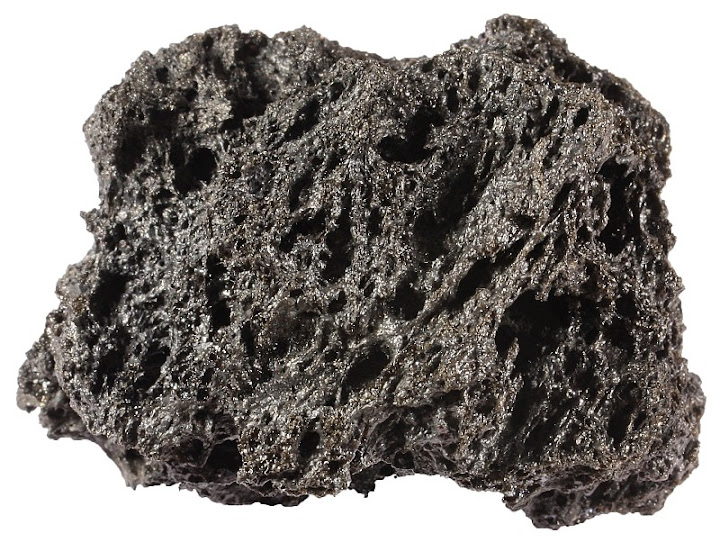Scoria is a highly vesicular and glassy volcanic rock with a mafic composition.
Scoria is very common rock type in volcanic areas. Sometimes it is not considered to be a distinct rock type. In this case it is a structural variety of basalt, andesite, etc. The problem is that volcanic rocks are officially categorized according to their chemistry. Scoria, however, is defined mostly by its vesicular nature.
Upper parts of basaltic lava flows may be scoriaceous for example. So the rock can easily be scoria and basalt at the same time. It may feel awkward and confusing to some but geology is full of such peculiarities which may seem strange at first but is actually necessary and really makes sense if you think about it.
Scoria often occurs as a single piece of rock that was thrown out of a volcano. Sometimes entire volcanic cones are made of scoria which in this case is also called cinder. ‘Scoria’ tends to be preferred term nowadays but ‘cinder cone’ is often used.
The composition of scoria is usually mafic. Similar rock with felsic composition is called pumice. Scoria, unlike pumice, does not float on water although it feels unusually lightweight for a dark-colored volcanic rock. Scoria contains smaller number of vesicles than pumice and these vesicles, because of less viscous magma, tend to be much larger. Here is an outcrop in Santorini that contains both pumice and scoria in different layers. Not every vesicular dark-colored volcanic rock is scoria. Occasional vesicles here and there are normal in basalt. It has to contain really many vesicles to be named scoria.
Scoria is sometimes reddish in color. This is iron, more precisely its oxide, that gives it such a rust-colored appearance. Scoria contains appreciable amount of iron, that is why it is called to be mafic (magnesium+ferric).

Piece of scoria from Etna (volcano in Italy). Despite being 5 cm in width it weighs only 15 grams.
Leave a Reply